#Agile Devops
Explore tagged Tumblr posts
Text
Goognu: Accelerating DevOps Excellence through Expert Consulting
Goognu is a premier DevOps consulting company dedicated to helping organizations achieve unparalleled success in their software development and operations practices. With our deep understanding of DevOps principles, cutting-edge tools, and industry best practices, we empower businesses to streamline their processes, enhance collaboration, and drive innovation.
0 notes
Text
Is your Software Ready for the Next Build?
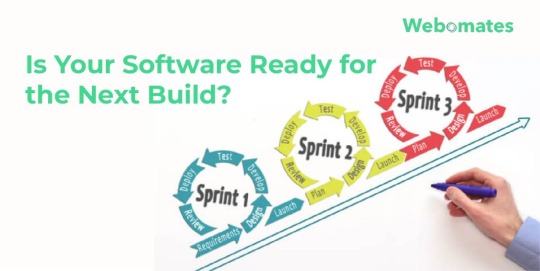
The Need for Speed: Ensuring Agility with Incremental Release
In a quest to deliver features faster, achieve higher flexibility, better satisfy customer requirements and overhaul competition, organizations are breaking through the barriers of traditional software development processes like Waterfall model, and instead taking the Agile DevOps path which is both iterative and incremental. Thus, there is a huge emphasis on shipping software faster.
This transformational journey involves removal of silos between the development, testing and operations teams, and applying shift left principles. Does this mean that we can achieve Zero Production defects? Though a fairytale dream of every organization, the Lean Software Development: An Agile Toolkit quotes:
“One of the fastest ways to kill motivation is what is called in the US Army a zero defects mentality. A zero defects mentality is an atmosphere that tolerates absolutely no mistakes; perfection is required down to the smallest detail. The army considers a zero defects mentality to be a serious leadership problem, because it kills the initiative necessary for success on a battlefield” — Mary & Tom Poppendieck
Thus, instead of “zero defects”, the agile organizations are all about continuous planning, continuous testing, continuous integration with ‘continuous’ being the focal area.
Integrating Software Testing in your Incremental Release
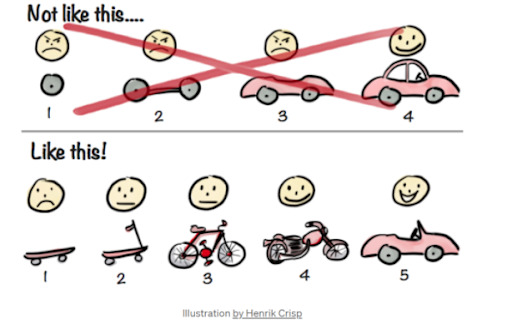
But, how do you know if your incremental build is ready?
Delivering software incrementally necessitates the Development and QA teams to work collaboratively to deliver a build. Though the nuances of day-to-day operations may vary from organization to organization, the teams adhere to the same core tenets to ensure incremental release — Continuous Integration, Continuous Delivery, and Continuous Deployment. The objective is to get feedback to the developers earlier & faster to help isolate issues enabling reliable and frequent delivery of code changes.
How we Do It @ Webomates CQ
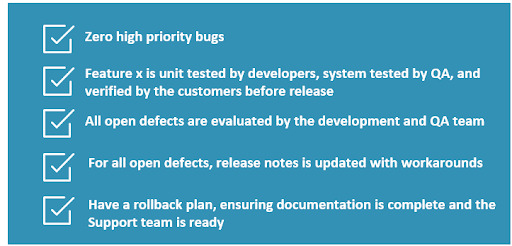
TestOps — The Webomates advantage
With its patented tools — Webomates CQ along with AI Defect Predictor tool, Webomates ensures that for a build with release notes, all committed test cases on all browser/smartphone/tablet will be executed in the committed time. This remains true regardless of software builds that modify features, defect fixes that modify test cases/scripts, and automation timeout errors. Webomates is fully configurable to the needs of the application and the Development Teams exhibiting agility in scaling up its testing services based on the changing requirements.
Ability to Speedily Test build in Dev, Pre-Prod & Prod:
As per the scope of the build, Webomates has the agility to perform verification using CI/CD, Overnight or Full regression. It shortens the regression cycle from weeks to hours.
CI/CD — 15 mins to 1 hour
Overnight with Exploratory — 8 hours
Full with Exploratory — 24 hours
Execute Smoke Testing, Overnight and Full Regression testing
With an aim to detect major problems early in the cycle, Webomates conducts Smoke testing to expose any integration issues. Webomates helps you to scale up by getting the build checks done via various regression services like mini/Smoke test suites in Developer environments, Overnight modular test suites at lower environments like integration and FULL in staging/Production environments as per requirements.
Implement regression testing with Shift-Left approach
With the power combination of Webomates regression testing with Shift-left approach, defects are quickly identified and fixed in the staging environment itself. You start with UI testing and API testing but with Smoke suites targeting the area that the developer is working on. As the features develop, then move on to module, integration and regression testing. If the module fails, there is no point for an integration test. The developers need to go back to the module and fix it before moving on. You do not wait till the end of the lifecycle to test the entire product.
Up-to-date Test Package
As the full regressions and modular tests include healing of the test cases and test scripts for modified features, Webomates ensures that the Test Package is updated with the new behavior of the software release.
Real-time results and analysis
To address the thousands of hours lost by QA professionals, Webomates created its patented AI Defect Predictor tool and shared true Pass and true Fail reports with the development team along with an in-depth analysis of automation failures. This AI Defect Predictor is provided to the development and QA teams that use CI/CD service to help them reduce their triage time.
For 300 test cases with a failure rate of 35% (105 failed test cases), it usually takes 12 hours to triage the results and identify the false positives. Using the Defect Predictor, the time taken drastically reduces to 2–3 hours.
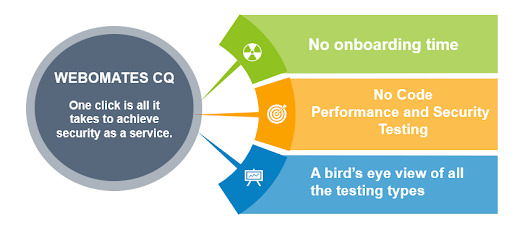
Conclusion:
For every incremental build, Webomates CQ can create, execute, maintain, analyze test cases and generate defects for browsers, mobile, Windows and API applications. Exact state of the system in terms of bugs is known after every check in.
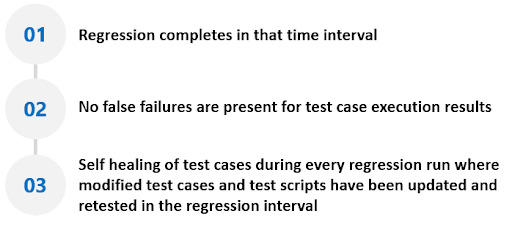
With such stringent code quality checks, the defects are detected at an early stage hence are easier to fix, ultimately resulting in improved code quality and timely delivery of the product. Read our articles on Shift Left Testing in Agile and Skip Security Testing at your own risk to understand how Webomates can helpWith the power combination of Webomates regression testing with you in building a good product where UI, API, Load, and Security are not left out to be tested as a different component at the end. If you are interested in learning more about Webomates’ CQ service please click here and schedule a demo, or reach out to us at [email protected]
1 note
·
View note
Text
Embrace the Future with AI 🚀
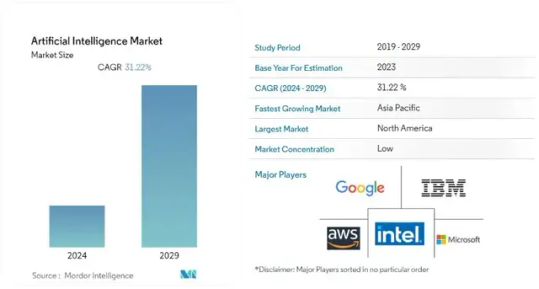
The AI industry is set to skyrocket from USD 2.41 trillion in 2023 to a projected USD 30.13 trillion by 2032, growing at a phenomenal CAGR of 32.4%! The AI market continues to experience robust growth driven by advancements in machine learning, natural language processing, and cloud computing. Key industry player heavily invests in AI to enhance their product offerings and gain competitive advantages.
Here is a brief analysis of why and how AI can transform businesses to stay ahead in the digital age.
Key Trends:
Predictive Analytics: There’s an increasing demand for predictive analytics solutions across various industries to leverage data-driven decision-making.
Data Generation: Massive growth in data generation due to technological advancements is pushing the demand for AI solutions.
Cloud Adoption: The adoption of cloud-based applications and services is accelerating AI implementation.
Consumer Experience: Companies are focusing on enhancing consumer experience through AI-driven personalized services.
Challenges:
Initial Costs: High initial costs and concerns over replacing the human workforce.
Skill Gap: A lack of skilled AI technicians and experts.
Data Privacy: Concerns regarding data privacy and security.
Vabro is excited to announce the launch of Vabro Genie, one of the most intelligent SaaS AI engines. Vabro Genie helps companies manage projects, DevOps, and workflows with unprecedented efficiency and intelligence. Don’t miss out on leveraging this game-changing tool!
Visit www.vabro.com
#ArtificialIntelligence#TechTrends#Innovation#Vabro#AI#VabroGenie#ProjectManagement#DevOps#Workflows#Scrum#Agile
3 notes
·
View notes
Text
Unleashing Efficiency: Containerization with Docker
Introduction: In the fast-paced world of modern IT, agility and efficiency reign supreme. Enter Docker - a revolutionary tool that has transformed the way applications are developed, deployed, and managed. Containerization with Docker has become a cornerstone of contemporary software development, offering unparalleled flexibility, scalability, and portability. In this blog, we'll explore the fundamentals of Docker containerization, its benefits, and practical insights into leveraging Docker for streamlining your development workflow.
Understanding Docker Containerization: At its core, Docker is an open-source platform that enables developers to package applications and their dependencies into lightweight, self-contained units known as containers. Unlike traditional virtualization, where each application runs on its own guest operating system, Docker containers share the host operating system's kernel, resulting in significant resource savings and improved performance.
Key Benefits of Docker Containerization:
Portability: Docker containers encapsulate the application code, runtime, libraries, and dependencies, making them portable across different environments, from development to production.
Isolation: Containers provide a high degree of isolation, ensuring that applications run independently of each other without interference, thus enhancing security and stability.
Scalability: Docker's architecture facilitates effortless scaling by allowing applications to be deployed and replicated across multiple containers, enabling seamless horizontal scaling as demand fluctuates.
Consistency: With Docker, developers can create standardized environments using Dockerfiles and Docker Compose, ensuring consistency between development, testing, and production environments.
Speed: Docker accelerates the development lifecycle by reducing the time spent on setting up development environments, debugging compatibility issues, and deploying applications.
Getting Started with Docker: To embark on your Docker journey, begin by installing Docker Desktop or Docker Engine on your development machine. Docker Desktop provides a user-friendly interface for managing containers, while Docker Engine offers a command-line interface for advanced users.
Once Docker is installed, you can start building and running containers using Docker's command-line interface (CLI). The basic workflow involves:
Writing a Dockerfile: A text file that contains instructions for building a Docker image, specifying the base image, dependencies, environment variables, and commands to run.
Building Docker Images: Use the docker build command to build a Docker image from the Dockerfile.
Running Containers: Utilize the docker run command to create and run containers based on the Docker images.
Managing Containers: Docker provides a range of commands for managing containers, including starting, stopping, restarting, and removing containers.
Best Practices for Docker Containerization: To maximize the benefits of Docker containerization, consider the following best practices:
Keep Containers Lightweight: Minimize the size of Docker images by removing unnecessary dependencies and optimizing Dockerfiles.
Use Multi-Stage Builds: Employ multi-stage builds to reduce the size of Docker images and improve build times.
Utilize Docker Compose: Docker Compose simplifies the management of multi-container applications by defining them in a single YAML file.
Implement Health Checks: Define health checks in Dockerfiles to ensure that containers are functioning correctly and automatically restart them if they fail.
Secure Containers: Follow security best practices, such as running containers with non-root users, limiting container privileges, and regularly updating base images to patch vulnerabilities.
Conclusion: Docker containerization has revolutionized the way applications are developed, deployed, and managed, offering unparalleled agility, efficiency, and scalability. By embracing Docker, developers can streamline their development workflow, accelerate the deployment process, and improve the consistency and reliability of their applications. Whether you're a seasoned developer or just getting started, Docker opens up a world of possibilities, empowering you to build and deploy applications with ease in today's fast-paced digital landscape.
For more details visit www.qcsdclabs.com
#redhat#linux#docker#aws#agile#agiledevelopment#container#redhatcourses#information technology#ContainerSecurity#ContainerDeployment#DockerSwarm#Kubernetes#ContainerOrchestration#DevOps
5 notes
·
View notes
Text
#DevOps lifecycle#components of devops lifecycle#different phases in devops lifecycle#best devops consulting in toronto#best devops consulting in canada#DevOps#kubernetes#docker#agile
2 notes
·
View notes
Photo

#Innova8 combining #designthinking #servicedesign and #userexperience #customer validated services and products Innova8™ combines design thinking, service design and user experience within an 8 hour process, that takes #AgileWorldInc #AgileTransformation #AgileFinOps #LeanPortfolioManagement https://agile-world.us/innova8-combining-design-thinking-service-design-and-user-experience/?utm_source=tumblr&utm_medium=%23AgileWorld&utm_campaign=%23AgileWorld
#karlsmithuserexperienceu#hourinnvovation#agile#agilehumans#AgileWorld#AgileWorldUSA#Design#DesignThinking#DevOps#Digital#HumanCentered#INNOVATION#Lean#OrganisationalDesign
2 notes
·
View notes
Text
Full Stack Development: Using DevOps and Agile Practices for Success
In today’s fast-paced and highly competitive tech industry, the demand for Full Stack Developers is steadily on the rise. These versatile professionals possess a unique blend of skills that enable them to handle both the front-end and back-end aspects of software development. However, to excel in this role and meet the ever-evolving demands of modern software development, Full Stack Developers are increasingly turning to DevOps and Agile practices. In this comprehensive guide, we will explore how the combination of Full Stack Development with DevOps and Agile methodologies can lead to unparalleled success in the world of software development.
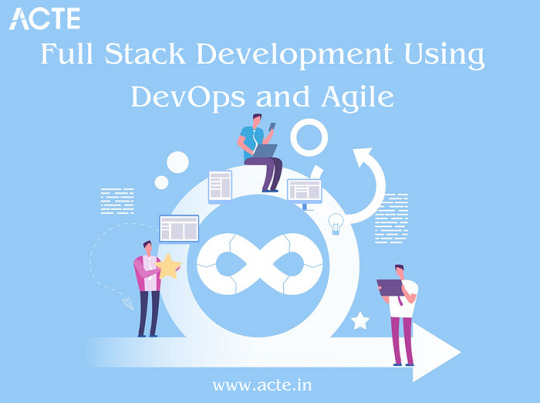
Full Stack Development: A Brief Overview
Full Stack Development refers to the practice of working on all aspects of a software application, from the user interface (UI) and user experience (UX) on the front end to server-side scripting, databases, and infrastructure on the back end. It requires a broad skill set and the ability to handle various technologies and programming languages.
The Significance of DevOps and Agile Practices
The environment for software development has changed significantly in recent years. The adoption of DevOps and Agile practices has become a cornerstone of modern software development. DevOps focuses on automating and streamlining the development and deployment processes, while Agile methodologies promote collaboration, flexibility, and iterative development. Together, they offer a powerful approach to software development that enhances efficiency, quality, and project success. In this blog, we will delve into the following key areas:
Understanding Full Stack Development
Defining Full Stack Development
We will start by defining Full Stack Development and elucidating its pivotal role in creating end-to-end solutions. Full Stack Developers are akin to the Swiss Army knives of the development world, capable of handling every aspect of a project.
Key Responsibilities of a Full Stack Developer
We will explore the multifaceted responsibilities of Full Stack Developers, from designing user interfaces to managing databases and everything in between. Understanding these responsibilities is crucial to grasping the challenges they face.
DevOps’s Importance in Full Stack Development
Unpacking DevOps
A collection of principles known as DevOps aims to eliminate the divide between development and operations teams. We will delve into what DevOps entails and why it matters in Full Stack Development. The benefits of embracing DevOps principles will also be discussed.
Agile Methodologies in Full Stack Development
Introducing Agile Methodologies
Agile methodologies like Scrum and Kanban have gained immense popularity due to their effectiveness in fostering collaboration and adaptability. We will introduce these methodologies and explain how they enhance project management and teamwork in Full Stack Development.

Synergy Between DevOps and Agile
The Power of Collaboration
We will highlight how DevOps and Agile practices complement each other, creating a synergy that streamlines the entire development process. By aligning development, testing, and deployment, this synergy results in faster delivery and higher-quality software.
Tools and Technologies for DevOps in Full Stack Development
Essential DevOps Tools
DevOps relies on a suite of tools and technologies, such as Jenkins, Docker, and Kubernetes, to automate and manage various aspects of the development pipeline. We will provide an overview of these tools and explain how they can be harnessed in Full Stack Development projects.
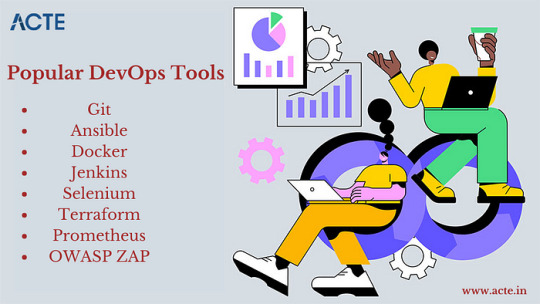
Implementing Agile in Full Stack Projects
Agile Implementation Strategies
We will delve into practical strategies for implementing Agile methodologies in Full Stack projects. Topics will include sprint planning, backlog management, and conducting effective stand-up meetings.
Best Practices for Agile Integration
We will share best practices for incorporating Agile principles into Full Stack Development, ensuring that projects are nimble, adaptable, and responsive to changing requirements.
Learning Resources and Real-World Examples
To gain a deeper understanding, ACTE Institute present case studies and real-world examples of successful Full Stack Development projects that leveraged DevOps and Agile practices. These stories will offer valuable insights into best practices and lessons learned. Consider enrolling in accredited full stack developer training course to increase your full stack proficiency.
Challenges and Solutions
Addressing Common Challenges
No journey is without its obstacles, and Full Stack Developers using DevOps and Agile practices may encounter challenges. We will identify these common roadblocks and provide practical solutions and tips for overcoming them.
Benefits and Outcomes
The Fruits of Collaboration
In this section, we will discuss the tangible benefits and outcomes of integrating DevOps and Agile practices in Full Stack projects. Faster development cycles, improved product quality, and enhanced customer satisfaction are among the rewards.
In conclusion, this blog has explored the dynamic world of Full Stack Development and the pivotal role that DevOps and Agile practices play in achieving success in this field. Full Stack Developers are at the forefront of innovation, and by embracing these methodologies, they can enhance their efficiency, drive project success, and stay ahead in the ever-evolving tech landscape. We emphasize the importance of continuous learning and adaptation, as the tech industry continually evolves. DevOps and Agile practices provide a foundation for success, and we encourage readers to explore further resources, courses, and communities to foster their growth as Full Stack Developers. By doing so, they can contribute to the development of cutting-edge solutions and make a lasting impact in the world of software development.
#web development#full stack developer#devops#agile#education#information#technology#full stack web development#innovation
2 notes
·
View notes
Text
🛠️ Throwback to the early days of DevOps
There was a time when devs and ops worked on different planets. Throwing code “over the wall” was the norm. Today, DevOps is about collaboration, automation, and shared ownership.
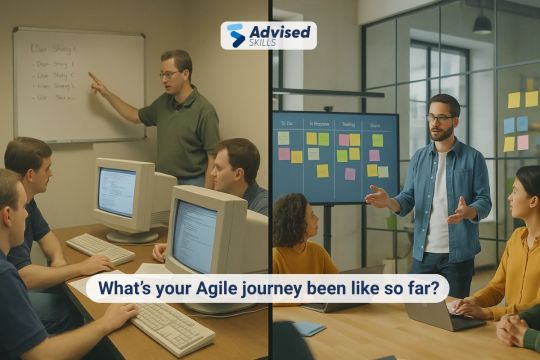
How did your team embrace the DevOps mindset?
1 note
·
View note
Text
Is DevOps and Agile the Same?- OpsNexa!
Explore the key differences and similarities between DevOps and Agile. Is DevOps and Agile the Same? While they are complementary, this guide will help you understand how each methodology addresses different aspects of the software development lifecycle and how they work together to accelerate development and deployment.
#DevOps vs Agile#Agile Methodology#Agile vs DevOps Differences#DevOps and Agile Comparison#Agile Development#DevOps Culture
0 notes
Text
Product Engineering Services for Modern Software Solutions
Modern software solutions take a comprehensive approach to designing, developing, testing, and maintaining software products throughout their lifecycle. This covers everything from initial product ideation and strategy to post-launch support and ongoing improvements. A product engineering services company plays a vital role in this process, assisting businesses in developing robust, scalable, and user-friendly software that meets market demands and user needs. Innovation is now necessary and no longer optional.
That’s where product engineering services play a transformative role. By bridging the gap between idea and execution, these services enable organizations to launch, scale, and maintain robust software solutions in a competitive landscape. From startups aiming to disrupt markets to enterprises modernizing legacy systems, the demand for intelligent, scalable, and agile software continues to grow rapidly. Fortunately, with the right approach to product engineering, even complex ideas can be transformed into high-performing digital products.
Importance of Product Engineering for Modern Software Solutions
To begin with, product engineering services cover the entire lifecycle of a software product, from ideas and design to development, testing, deployment, and maintenance. This comprehensive approach ensures that products are not only functional and user-friendly but also scalable and ready for the future.
Moreover, these services are typically offered by specialized teams with diverse skills, allowing for agile practices, rapid prototyping, and quicker time-to-market. Whether it’s mobile apps, SaaS platforms, enterprise tools, or IoT systems, product engineering plays a vital role in building the digital foundation of modern businesses………….
#product engineering services#software product development#digital product engineering#agile product engineering#scalable software solutions#software lifecycle management#product innovation strategy#cloud-native development#DevOps integration#modern software architecture
0 notes
Text
AIgile: How AI Transforms Agility in Software Development
AIgile — the blend of artificial intelligence and agility — is more than a buzzword. It signals a shift that could either erode or elevate everything agile was meant to stand for. For those wondering if the Agile hype is over, the emergence of AI might just be the next chapter — not an ending, but a reframing. From Agile to AIgile: A Changing Landscape Agile was born from a manifesto that…
#agile coaching#Agile Manifesto#agile practices#Agile Software Development#agile teams#Agile Transformation#AI in Agile#AI tools#AIgile#artificial intelligence#Backlog Management#Continuous Improvement#DevOps#NLP in Agile#product development
0 notes
Text
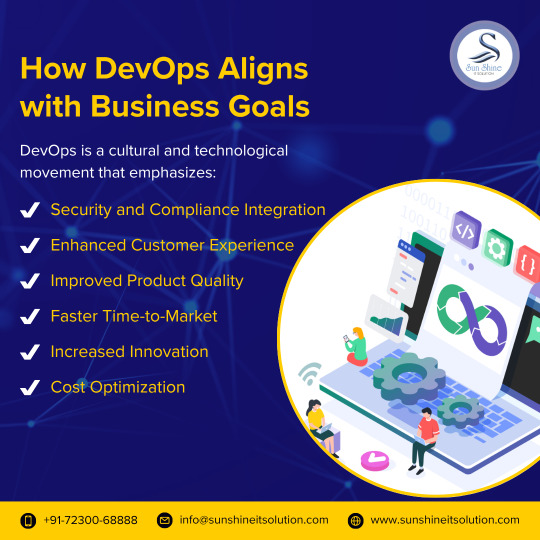
🚀 How DevOps Aligns with Business Goals – A Strategic Advantage 🔧📈
At Sun Suhine IT Solution, we don’t just implement DevOps – we align it with what matters most: your business success.
DevOps is more than just tools and automation. It's a culture of collaboration, speed, and continuous improvement that directly supports key business goals:
✅ Faster Time-to-Market – Rapid, reliable releases help you respond to customer needs and market changes faster. ✅ Improved Product Quality – Continuous testing and integration reduce bugs and enhance user experience. ✅ Greater Agility – Scale operations and adapt quickly to new business strategies or customer demands. ✅ Reduced Operational Costs – Automation eliminates manual errors and improves efficiency. ✅ Stronger Team Collaboration – Developers, operations, and business teams work in sync toward shared objectives.
DevOps isn’t just IT—it’s a strategic business enabler. And at Sun Suhine IT Solution, we help you unlock its full potential.
🔍 Ready to align your tech with your business goals? Let’s connect.
Explore Our Linkedin Page - https://www.linkedin.com/company/28703283/admin/dashboard/
Please explore our YouTube channel for informative videos. https://www.youtube.com/@sunshineitsolutions
Visit our blog for informative business ideas https://www.blog.sunshiene.com/
Contact Us :- https://wa.me/+91-7230068888
WhatsApp Channel ( Subscribe for more updates ) https://whatsapp.com/channel/0029Vb0QMGg0bIdggODhE22T
#DevOps#BusinessGoals#DigitalTransformation#SunSuhineITSolution#Agile#SoftwareDevelopment#ITStrategy#Innovation#TechForBusiness#SunShineItSolution#SunShine#ItCompanySunShine#SoftwareDevelopmentCompany
0 notes
Text
Amarico

Amarico is a South African-based consultancy that helps organizations achieve enterprise agility through modern, scalable solutions. With a strong emphasis on DevOps, Agile practices, and cloud technologies, Amarico empowers businesses to improve collaboration, accelerate delivery, and adapt more effectively to change.
As an official Atlassian Solution Partner, Amarico specializes in optimizing team performance and workflows using tools like Jira, Confluence, and Bitbucket. Their services range from agile coaching and training to DevOps implementation, cloud migration, and site reliability engineering. The company's solutions are tailored to support clients in both public and private sectors who are navigating complex digital transformation journeys.
Through expert guidance and hands-on support, Amarico ensures its clients not only adopt modern software delivery practices but also sustain long-term agility and operational excellence. Their team brings a practical, people-centered approach to every engagement—helping businesses build resilient systems, foster cross-functional teams, and continuously deliver value to their customers
Email: [email protected]
Phone: 087 265 2371
Website URL:
Follow On:
Linkedin
1 note
·
View note
Text
Vabro - #1 Unified Platform to Streamline Your Workflows 🚀
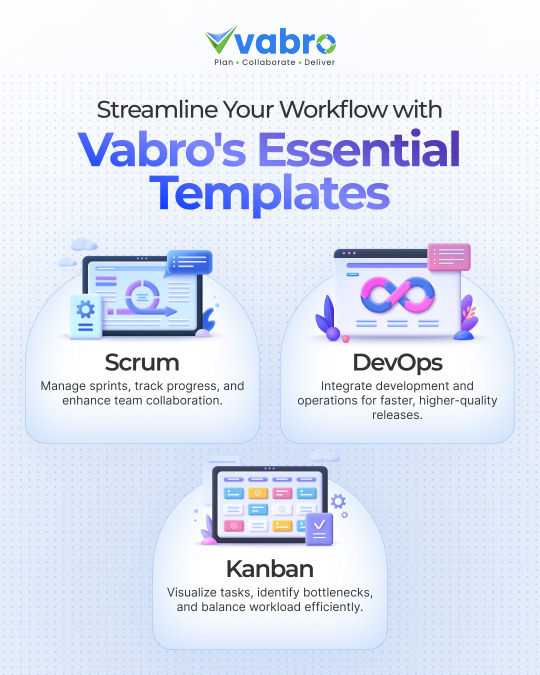
Tired of juggling multiple tools? Vabro's all-in-one platform seamlessly integrates Agile methodologies to meet your team's needs. Vabro's Essential Templates help you: 🔹 Manage sprints and boost collaboration with Scrum 🏃♂️ 🔹 Visualize tasks and optimize workload with Kanban 📊 🔹 Accelerate releases with DevOps 🚀 Say goodbye to siloed tools and hello to a unified platform. Vabro's customizable templates are a game-changer for teams of all sizes. Ready to transform your productivity? Please visit www.vabro.com today! 🔑
1 note
·
View note
Text
Why Choose Terraform Training in Philadelphia for Your DevOps Career
In today’s fast-paced world of cloud computing and DevOps, the need for skilled professionals who can manage infrastructure as code is growing rapidly.
0 notes
